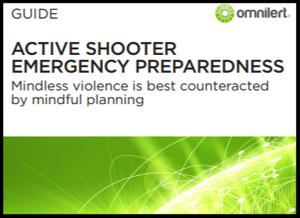After an active shooter incident occurs, much of the tough work is still left to be completed. An incident like this has most likely affected the entire community, and it will likely take the entire community to recover. Recovery might include hospitals, grief counselors, employee assistance, and more.
After the incident has been resolved, organizations must review the experiences and data from the event to identify areas for improvement. Running through every detail from the event helps to assess how effectively the response was executed and how many notifications were received. This can help to ensure that plans and procedures are updated to make everyone at your organization safer.
aBelow are some key exercises to give you and your Critical Communications Team (CCT) additional insights that could help you in your post-crisis recovery plan:
- You should schedule a meeting with your CCT to reflect on the active shooter incident and review the actions in detail.
- Put a survey together for your team, first responders, and the community. Ask them specific questions about the incident to get their feedback. Sending out a survey could get you more feedback that might not be mentioned during a larger meeting.
- During any type of emergency event, especially an active shooter incident, social media will most likely be used by people within your organization trying to obtain information as well as spread information; all the while your CCT sends out alerts via this avenue, too. Analyzing this feedback could tell you important details about the incident that you may not have garnered otherwise.
With all of this cumulative data, you must take a critical look at your active shooter emergency response plan. You have to use this information to help you and your CCT decide what worked, what didn’t, and what improvements can be made. From the survey, your CCT meeting, or your social media analysis you may realize that the delivery rate of your alerts was not as high as you needed them to be. You might realize you need to use more than simply text and email to reach people in certain areas without handheld electronics. Your post-crisis recovery plan is an opportune time to look for strategies to enhance the organization’s ability to respond to crises.
It’s impossible to tell when an active shooter emergency will occur or the details of it, so your active shooter emergency response plan might not fit the actual emergency perfectly. It is critical that your plan be as close to perfect as possible by using data to improve and add to your plan. Emergency response and action plans, no matter the emergency you’re planning for, are always in improvement stages. Regular exercises and drills are as important as actually having a plan.
To learn more about what steps should be taken Before, During, and After an active shooter incident, download the Active Shooter Emergency Preparedness Guide to help your organization be more prepared.


